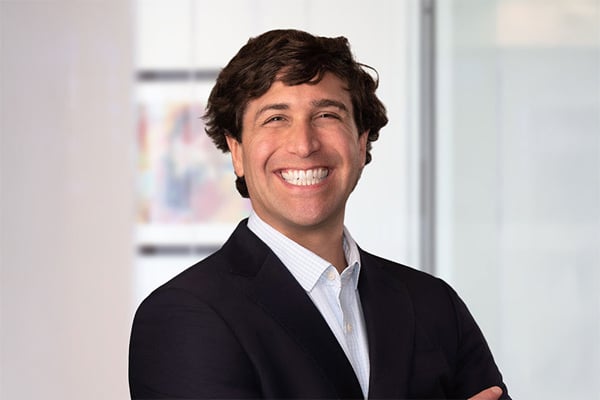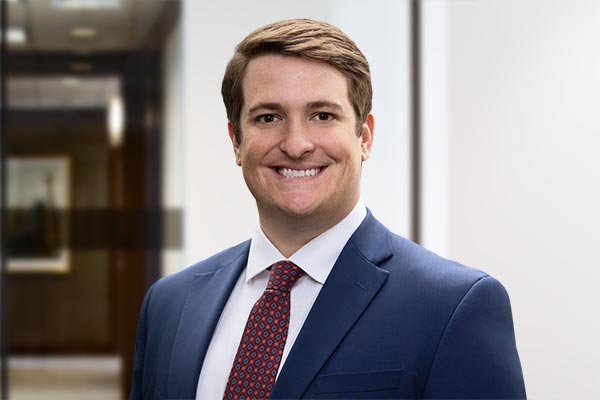Article
PPP Reboot is Good News for Small Businesses
Published: Dec 23, 2020

On December 21, 2021, Congress passed sweeping bipartisan legislation, including the COVID-19 Emergency Relief Package, extending and expanding the Paycheck Protection Program (PPP) until March 31, 2021.
The relief package, which still awaits President Trump’s signature, is set to re-open the PPP for another round of forgivable loans for eligible first-time and second-time borrowers and also allows for increases in original loans for certain borrowers.
The legislation expands aid for businesses and industries that have been hit the hardest, expands eligible uses of PPP funds, and allows for tax deductibility of normal business expenses.
First-Time Borrowers
Since August, the PPP portal has been shuttered as a result of Congressional inaction.
Despite increased COVID-19 cases and continued governmental restrictions and shutdowns, borrowers have been unable to access the $125 billion in relief remaining in the program until now.
This latest legislation not only taps into the unused funds, but also provides an additional $284 billion in funding for the first- and second-time borrowers.
Companies that do not already have a PPP loan may, upon enactment of the legislation, apply for an initial PPP loan subject to the eligibility requirements (500 or fewer employees, etc.) under the original PPP rules.
However, the relief package expands the loan program to add entities that were previously excluded, including:
- Housing cooperatives with 300 or fewer employees;
- FCC license holders and newspapers, including public broadcasting stations; and
- 501(c)(6) entities and Destination Marketing Organizations (DMOs) with 300 or fewer employees.
Importantly, business associations and DMOs have been on the front lines of the COVID-19 pandemic and are now able to seek much-needed assistance to continue and promote their missions. The definition of DMOs extends to entities of a state or a political subdivision that are “engaged in marketing and promoting communities and facilities to businesses and leisure travelers through a range of activities[.]”
The bill also includes additional eligibility requirements for some of these newly eligible loan recipients, such as a requirement that eligible 501(c)(6) entities and DMOs receive no more than 15% of revenue from lobbying activities.
Second Draw Loans
The PPP was originally designed to “bridge the gap” for small business by maintaining payroll through the initial weeks of the pandemic. Unfortunately, the bridge was simply not long enough.
Federal Reserve Chairman Powell emphasized this on December 1, 2020, when he testified that “the outlook of the economy is extraordinarily uncertain.” Perhaps the difference now, as compared to March, is the active deployment of vaccinations and therapeutic treatment development that provides a sense of hope during this economic uncertainty. Until then, Congress has recognized the need to extend the financial bridge.
The relief package creates a second draw loan that offers additional support to businesses that have been most severely impacted by the pandemic.
Second draw loans are available to businesses that have already received a PPP loan and meet other eligibility requirements tied to economic hardship. In particular, a PPP recipient may be eligible for a second draw loan if it:
- Has 300 or fewer employees;
- Has used or will use the full amount of a first PPP loan; and
- Can demonstrate at least a 25% reduction in gross revenue in any 2020 quarter relative to the same quarter in 2019.
Capped at $2 million, eligible second-time borrowers may receive a maximum loan amount of 2.5 times their average monthly payroll costs from the one-year period before the date on which the loan is made or the 2019 calendar year.
Recognizing a larger need for the hospitality and restaurant sectors, PPP loan recipients in the Accommodation and Food Services sector (NAICS Code No. 72) may receive an additional loan of up to 3.5 times their average monthly payroll costs from either of the two periods, which is also capped at $2 million.
Second draw loans are subject to the same forgiveness rules as first-time PPP loans, including those governing eligible expenses and 60/40 cost allocation between payroll and non-payroll costs. Eligible entities may only receive one second draw loan, but the bill includes a waiver of lender and borrower fees to encourage participation.
Additional Eligible Expenses
In an effort to simplify the program and provide more flexibility, the legislation expands the eligible uses for PPP funds. In particular, the bill includes four new costs and expenditures that may be forgiven:
- Covered Operations Expenditures: Payments for business software or cloud computing services that facilitate business operations, product or service delivery, human resources, or accounting functions.
- Covered Property Damage Costs: Costs related to property damage and vandalism or looting due to public disturbances that occurred during 2020 that were not covered by insurance.
- Covered Supplier Costs: Expenditures made to a supplier pursuant to a contract, purchase order, or order for goods in effect prior to the loan that were essential to the recipient’s operations at the time the expenditure was made.
- Covered Worker Protection Expenditures: Expenditures used to purchase PPE and/or to facilitate the adaptation of business activities to comply with federal, state, or local health and safety guidelines related to COVID-19 between March 1, 2020 and the end of the national emergency declaration.
These additional eligible expenses apply to loans made before, on, or after the enactment of the new bill but do not apply to borrowers that received forgiveness before the enactment of the new relief package.
Increase in Loan Amount due to Updated Regulations
More than 5.2 million small business have participated in the PPP to date. Many of those small businesses have completed their covered period, submitted their loan forgiveness application, or returned unused funds due to compliance with prior regulations.
The new PPP legislation requires the U.S. Small Business Administration (SBA) to issue guidance within 17 days of enactment that allows borrowers that returned all or part of their PPP loan or did not accept the full amount to reapply for the maximum loan, unless the borrower has already received a determination of forgiveness.
This new guidance will also allow borrowers whose maximum loan amount has increased as a result of any interim final rule to request an increase in their loan, even if the loan has been fully disbursed or a Form 1502 has been submitted.
Simplified Forgiveness Applications for Loans of $150,000 or Less
Borrowers will be able to use a simplified forgiveness application if their loan amount is $150,000 or less.
Specifically, the bill states that these borrowers will receive forgiveness if they sign and submit a one-page certification issued by the SBA that includes a description of the number of employees the borrower was able to retain because of the loan, the estimated amount of the loan spent on payroll costs, and the total loan value.
These borrowers will also have to attest to the accuracy of the certification and their compliance with the PPP’s requirements.
Notably, borrowers eligible for the simplified forgiveness application will not have to submit supporting documentation, but will be required to retain relevant records for a three- or four-year period, depending on the nature of the records.
Expense Deductibility
Despite Congressional outcry that the CARES Act intended not only to allow for PPP proceeds to be tax-free income (subject to loan forgiveness), but that it also intended to allow for expenses paid for by those proceeds to be tax deductible, both the IRS and Treasury had rejected the later position for months.
However, in perhaps the most important clarification in the bill, Congress has explicitly permitted small businesses to claim a normal tax deduction for business expenses paid with PPP funds.
What’s Next
President Trump must first sign the bill into law, and then the SBA and Treasury will begin to promulgate a new set of rules and regulations.
As with the original round of the PPP, it is important to monitor developments, clarifications, and implementation by these regulatory agencies.


